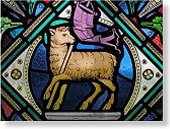| There was great excitement at my house when, at 11pm one night, I found evidence that at long last there just might be a convict in our family. For years we have searched in the hope of finding a convict to call our own with no success but here he was, sentenced to seven years transportation for his involvement in the 1832 Croydon Cambridge Machine Breakers Riot! This wonderful revelation appeared while searching on the web on a site titled “Speculum Gregis, Croydon-cum-Clopton”, Croydon being the name of the Cambridgeshire village where a main branch, the Endersbys, of our maternal ancestors originated, leaving there to emigrate to Australia in 1852. |
 |
| Croydon Village c1906 |
|
| The Riot and subsequent trial were significant events in Croydon history and under the heading “The Croydon Riot” was the following - “At the Cambridge Assizes held in October 1832, sixteen villagers were brought before the Court and charged with the crime of destroying a threshing machine on the premises of Mr. Thomas Faircloth, farmer, of Croydon on the 3 September 1832”. Underneath appeared a list of the sixteen accused and one of these was “John Green”. Instantly a bell rang, “Ah, I’m sure we have a “Green” somewhere in the Croydon tree!” says I. Sure enough, we had a great great great grandmother Mary Green, whose married name was Mary Endersby, SHE had a brother John and this was our man. How did we know this was her brother I can hear you say – well, we have been extremely lucky with this website as not only did it contain the story about the Riot but it also contains a full, off the cuff, warts and all, description of every inhabitant of Croydon village compiled by the then minister of the Parish Church, Reverend Francis Fulford, in 1845. This document recorded their ages, occupations, literacy and church attendance and in that year Francis Fulford says of our John Green, “He was formally transported for being very active in the agricultural riots, is now a very steady man, sings in the choir at Croydon Church, and is a communicant.” |
| Now the story became really interesting as this account was written some ten or more years after the Riot and says that not only was John Green transported but somehow managed to return home after serving his sentence and was living next door to his sister Mary Endersby. |
| Never having got this far into Convict ancestry before and desperate to discover more, I hot-footed next morning down to the History Centre in need of help to find our man. We knew that he had been charged in October 1832 so the first port of call was to look at all the John Greens who arrived in Australia during the years following 1832. With a name like John Green there were quite a few as you can imagine but try as we might a records search proved a dead end, every John Green was either the wrong age or had been convicted of the wrong offence. |
| Then it began to dawn on us that perhaps he never left England in the first place. All evidence pointed to his original conviction but what had happened to him and where to look next? While we had been busy searching through the convict records Beth, the research assistant, and had been quietly looking on the shelves in the library, handed me little thin yellow book titled “Rebels of the Fields” [1]. It was the key to unlocking the whole mystery and there it had been on the library shelf all the time. Here on page fifty-five of this unimpressive looking book was the name of John Green himself! In a paragraph relating the story of what happened to the Croydon Rioters, the last line held the solution to the mystery - “They were all found guilty and John Kidman, together with Storey Anderson and John Green, was sentenced to transportation for seven years, but Kidman alone sailed for New South Wales.” [2] |
There it was, our convict had never left England and had it not been for that wonderful little yellow book we would still be looking for answers and may never have known the full story.
|
Notes:
[1] “Rebels of the Fields” by Jill Chambers.
Published by Jill Chambers 1995.
4 Quills, Letchworth, Hertfordshire, SG6 2RJ.
[2] Reference to John Green not being transported is credited by Jill to the Public Records Office.
|

